
June 27, 2018
In the digital world,
employee engagement is about connecting people to purpose.

Regardless of what types of products or services you provide, if your employees are not fully engaged across your end-to-end value chain, it is likely your customers are not either. Now here’s the rub:
Gallup’s 2016 employee engagement survey documented these results:
- 33% of employees said they were “engaged”
- 51% said they were “not engaged”
- 16% said they were “actively disengaged”
The 2016 results extend a five-year trend of increased employee disengagement.
So if only one third of your employees are engaged in delivering a strong and enduring customer experience, it doesn’t bode well for you to increase the lifetime value of your customer relationships. As such, new ways to increase employee engagement merit consideration.
Finding the right balance between productivity and creativity
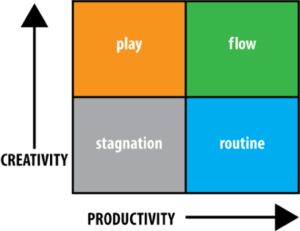
At Google’s recent “Work Reimagined” virtual conference, Prabhahakar Raghavan, VP of their Cloud business, said “we’re in a world where only the swift can survive.” As a result, “all of sudden, it’s critical for every employee in the firm to be not only productive but creative.” At Google, he said employees are spending 20 hours or more of their time each week just gathering information and “that is not a good way to be creative.”
He went on to say that “companies need the entire collective wisdom of their employees working for them.” To achieve that goal, employees must be able to quickly access relevant documents and data, leverage institutional knowledge, connect with other members of their teams and be able to collaborate in real time.
Leaders and managers across all industries are continually asked to find more cost-efficient ways to develop, deliver and support the products and services their organizations bring to the marketplace. Cost reduction exercises have become a common practice of the annual planning and budgeting process.
This continued emphasis on productivity not only depletes valuable resources and tools it undermines the promise to employees that they should be innovative and think creatively. A recent Adobe study found that 80% of employees “feel they’re increasingly being pressured to be more productive rather than creative. 75% of people think they’re not living up to their creative potential.”
Companies know the repeatable processes that deliver productivity gains but they are less well versed in what repeatable process will deliver a culture of creative experimentation and continuous learning. Not only will these processes produce new products and services that delight customers they will also produce multiple opportunities for employees to expand their personal learning and development horizons. That in my opinion is the path to much higher employee engagement.
Re-engaging with your employees: from functional silo work to cross functional team work
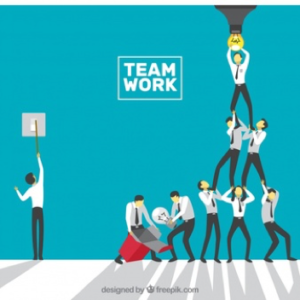
In today’s digital enterprise, the old vertically integrated, hierarchical organizational structures have given way to horizontally structured cross functional networks. These new networks require increased demand for communication, coordination and collaboration among internal business partners and external stakeholders. To carry out these new roles and responsibilities, employees need new tools and new incentives:
- They need to have easy access to the latest digital technologies including cloud, mobile and social tools wherever and whenever they need them.
- They need to have better access to real-time data analytics to help them learn faster than the competition.
- They need training and development programs that are focused on creating sustainable customer relationships not just efficiently handling customer transactions. In fact, tools like artificial intelligence and machine learning can automate productivity tasks freeing up employees for more creative tasks.
- They need to be measured by new metrics that more accurately reflect the increasing value they bring to the organization and the feedback needs to be fast and frequent.
- They need to be compensated for delivering both short term results and increasing the company’s long-term power to grow.
What is the lifetime value of an employee who is fully engaged?
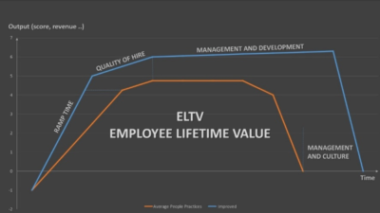
Companies measure and track the lifetime value of their customers and develop programs to increase that value. Many organizations use the Net Promoter Score as one key indicator to measure the level of engagement from their customers.
How many companies do you know that track the lifetime value of an employee? Why not create a net promoter score to measure employee engagement? The question to ask is “ how likely are you to recommend that a friend or associate come work for your company?” Armed with the answers to that question, you can start to build a targeted program to move “passives” to “promoters.” The percentage of respondents who are “detractors” will also give you a comparison to the Gallup survey results.
What are the skills and capabilities employees need to be successful?
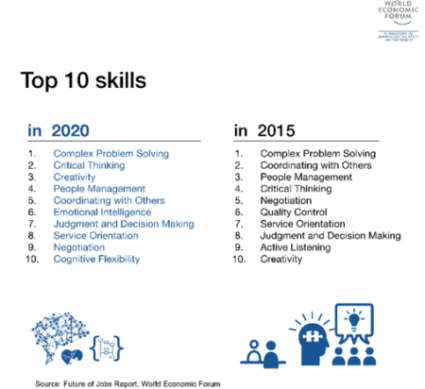
At the recent World Economic Forum meeting, there were a number of discussions on what skills employees need to help their organizations compete in an age of digital disruption. As the chart above highlights, the new skills required are all critical to leading and managing horizontally structured cross functional networks at the new speed of business. It is interesting to note that creativity has moved to the number two spot up from ten three years ago.
In the work I do with CIOs and their senior leadership teams, I use the chart below to begin the conversation about what are the new skills and capabilities our IT team needs to support the company as a digital enterprise.
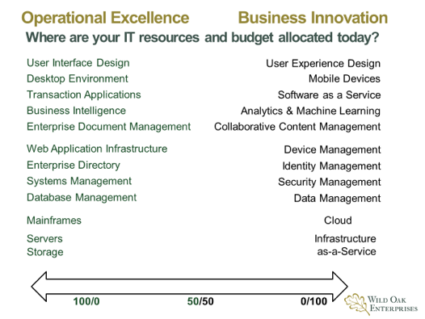
This talent assessment process provides useful data and insights into where the organization needs to focus its future development and recruiting efforts. It also aligns with the types of work employees want to do to be fully engaged with their organization’s purpose and goals.
It has also led to some early discussions on what are the skills and capabilities you need to be successful as a 4 Zone business professional. As I’ve discussed in previous blogs, the work in each of the four zones has a different operating cadence, skill requirements and success metrics to deliver the desired outcome.
However, taken together, I think they provide a foundational framework to significantly broaden the developmental opportunities for employees and in doing so greatly increase their engagement and ultimately their lifetime value to your organization. As this will be an ongoing focus of my work over the next several years, I welcome your comments and participation in these dialogs, as well as, your interest in piloting an early use case.
As always, I am interested in your feedback and perspectives on the ideas put forth in this blog. Please e-mail them to me at pdmoore@woellc.com. And, if this content could be useful to someone you know please share it here:


